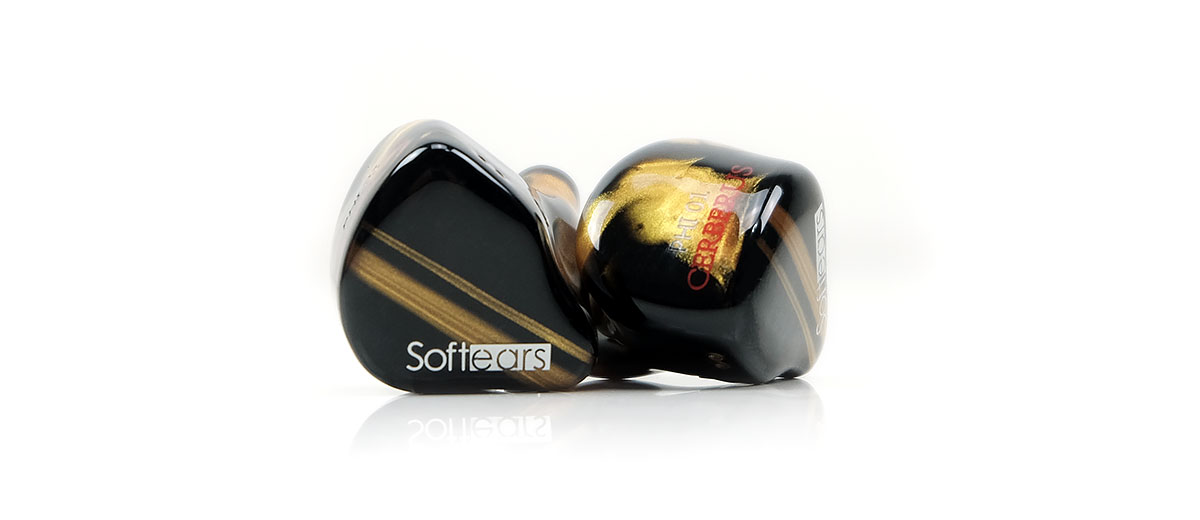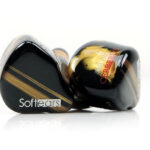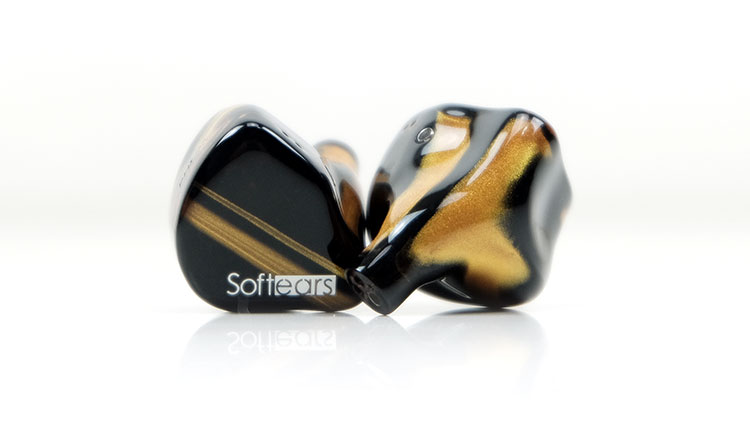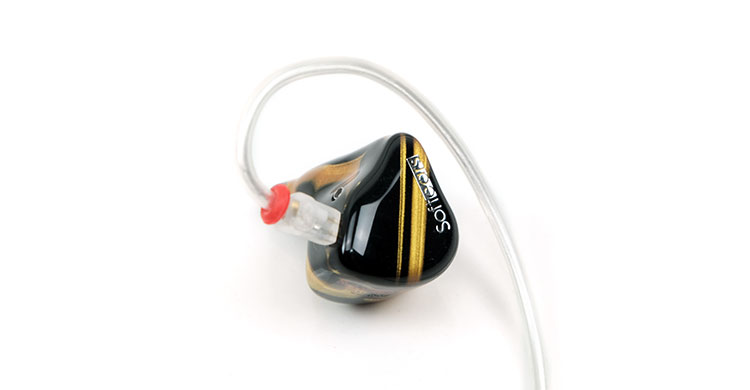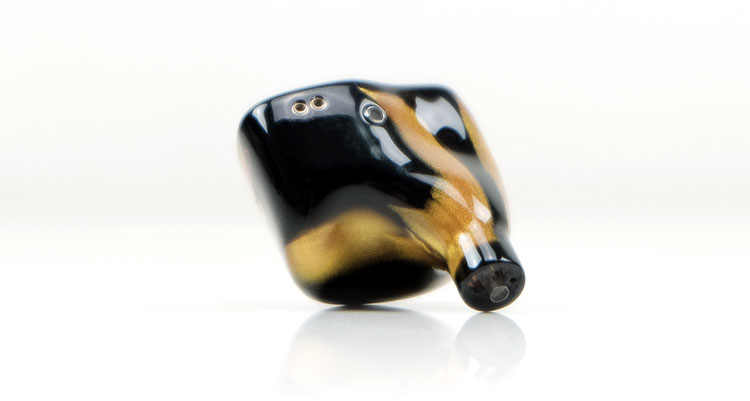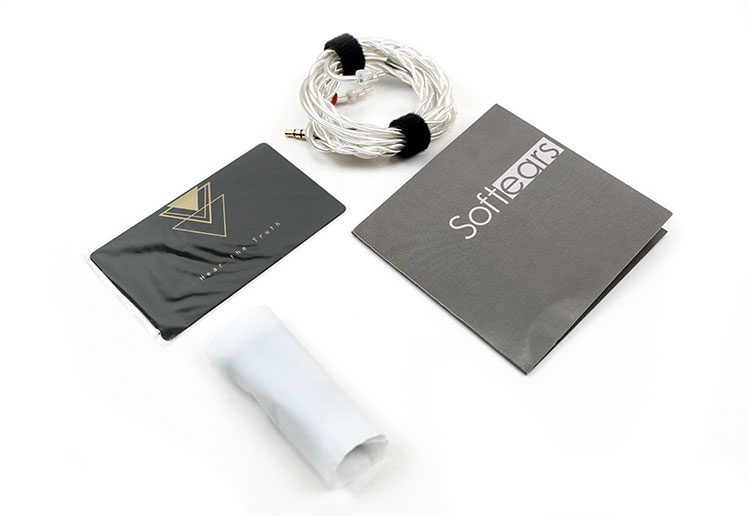Our review of the Softears Cerberus, which is a co-flagship hybrid single dynamic, quad BA, and dual electrostatic driver universal IEM. It is priced at $2099.99
Disclaimer: This was sent to us as a sample for our honest opinion. Headfonics is an independent website with no affiliate links or services. We thank the team at Softears for giving us this opportunity.
To read more about Softears products previously covered on Headfonics please click here.
Note, this article follows our latest scoring guidelines which you can read up on here.
Though this is our 3rd review of the Softears Series I believe the Cerberus was their initial offering from Softears and came out before the RS10 and RSV.
It is priced the exact same as the RS10 making it their co-flagship offering at $2099.99. We got this one direct from Softears but for interested readers in the US who want to grab it, we supplied a link below the score for their regional dealer Musicteck USA.

Technical Specifications
The Cerberus is quite a different offering from the all-BA driver RSV and RS10 with a hybrid mix of dynamic, BA, and electrostatic. The precise configuration is a single 10mm dynamic driver for the lows, 4 BA drivers for the mids and mid-highs, and a Sonion dual electrostatic driver pack for the highs.
The dynamic driver uses a carbon fiber and paper dome tweeter for a balanced and even excursion, as well as increasing speed and sensitivity. The 4 BA drivers are actually a quad pack not too dissimilar to a JH Audio style module though I don’t think they are vented or open back versions.
If memory serves me right these are Gen 1 Sonion electrostatic drivers and not the more recent Gen 2. That would make sense given that Cerberus came out quite some time ago during the initial wave of e-stat product offerings.
One additional configuration is the inclusion of a passive BA driver alongside the main quad BA pack similar to the RS10 though for the mids and not the bass. These do not emit sound but rather vibrate passively to attenuate air pressure, reduce fatigue, and improve the physicality and richness of the BA response.
Design
The Cerberus dimensions virtually match the RS10, with its compact width but a relatively tall main body that gently slopes into a triple bore nozzle.
The aesthetic, however, is quite different and closer to the darker tones of the RSV than the transparent resin on the RS10. This is an invitingly warm and soft mix of black and orange creating a faux stabilized wood appeal though the actual material is resin or acrylic so it is not that heavy in the hand.
The signature twin streak from the RS10 also remains on the black faceplate though this time it is a soft orange matching the main shell colors to give it a seamless look. The silver Softears branding is ever-present on the shell as with the previous RSV and RS10 we reviewed.
There is no lip finish on the Cerberus nozzle but the supplied tips never feel like they will struggle to stay on what seems to be a consistent rolling experience, even with 3rd party tips. Just to the top and ear near the flush 2-pin is a small metal ring finished bass venting port finished for the 10mm dynamic driver to breathe.
Overall, it’s an attractive and unique finish more akin to a quasi-custom shape and design rather than a standard off-the-shelf IEM look and not a million miles away from the RS10 contoured shape.
Stock Cable
The Cerberus comes with the same cable as the RS10 also which is better than a lot of other stock cables but given its flagship status and aesthetic, I would have preferred a darker finish and a slightly larger gauge to really open up the performance.
This is a 4-core 0.78mm 2-pin terminated 6N silver-plated single-crystal copper cable which I presume is a Litz geometry and fairly resistant to potential oxidizing green discoloration.
The length of the cable is about 1.2m with a nice and tight twisted finish below the splitter and with some clean complementary chrome-finished Softears branded barrels for the splitter and the 3.5mm TRS jack. The jacket itself uses a soft transparent PVC finish.
The connectors are less convincing with transparent min molded barrels that do not look that premium for me. Still, the right connector has some clear red marking to easily pick it out which is a plus. Above the jack, the cable is split and perhaps less appealing looking for me with some very long albeit quite soft and sparingly memory coating.
Physically the cable performs quite well. It keeps the Cerberus wearing experience low on microphonics, with light and easy handling, and next to no memory retention or kinks.
Comfort & Isolation
With a similar contoured shape and longish nozzle, the Cerberus is as comfortable as the RS10 in the ear. I rated the R10 well for isolation also but the Cerberus just drops back a little due to its bass venting port. Still, for a hybrid design, it suppresses external noise very well indeed.
I tend to call this a pro-style fit when referring to custom IEM nozzle lengths. Stage artists tend to like to get the output as close to the second bend as possible in the canal and these feel like they are going closer than most which also helps keep the bass performance healthy. There isn’t a huge amount of ear canal pressure either which is a big bonus in my book.
Tips
Tip selection is just average though, an area I think Softears could improve on. The Cerberus comes with a single set of narrow bore black silicon tips in large, medium, and small sizing. Due to the good insertion depth, you really shouldn’t need the large sizes, which would be my normal choice.
The medium tips fit very well indeed with a good performance in terms of comfort and isolation. I found the sound quality of the stock tips a bit on the softish side on the low-end with 3rd party alternatives such as the Final E getting a bit more physicality out of that 10mm driver.
The good news is that the nozzle diameter at the tip is narrower than the RS10 so tips like the Azla XELASTEC’s will fit just fine on the Cerberus. These will inject a little bit more upper mids and treble presence as well as an improved performance for isolation.
Packaging & Accessories
Like the RS10, the Cerberus comes in a fairly compact little retail box with the only main difference being the color theme which is green here as opposed to black.
This is a two-piece square box with the outer sliding off the inner. Instead of the RS10’s Softears silvery branding on the outside, you get a gold laminate strapline “Hear The Truth” which I presume is the Softears mantra as you can find it popping up on alternative packaging such as the RSV.
Inside the box, everything is packed into a faux leather stitched puck-styled case with a similar green theme. It’s a fairly large and well-cushioned design, one that a few high-end rollers should be familiar with as it is quite similar to the one 64 Audio is using of late.
I have said many times before these cases are a big upgrade on the older heavier aluminum versions and offer decent levels of storage. They look nice also, soft to the touch, and well protected but they are not the most pocketable.
You will get plenty of space, however, for the drivers, cable, and tips with additional accessories including a manual and warranty card.
Sound Impressions
Summary
The Cerberus delivers a relatively warm-sounding presentation with a sub-bass bias over mid-bass punch and a fairly relaxed treble performance. Mids are smooth, somewhat linear also in their curving but with just enough bump to bring out a very even-toned and inviting vocal performance.
In some ways, it’s entirely reflective of the initial generation of Sonion Electrostatic drivers with their need for power that results in only a slight rather than overt influence in an otherwise dominant BA and dynamic driver coloration.
Those coming from the RS10 will find this quite a contrast. Swap punchy for some bass rumble, trade mids clarity for mids euphony, enhance the low-end depth but lean back on high-end extension and sparkle. Both, in a way, complement each other and will appeal to very different crowds, or simply someone who likes to have a choice in their IEM collection.
Synergy can make a big difference with Cerberus. For example, the stock tips are good but have a tendency to deliver a slightly softer bass performance. Switching to Final E will tighten up the bass and deliver just a bit more clarity in the highs also.
Another synergy example, (more detail on page 2), is your source choice with the likes of the HiBy RS6 pushing its excellent vocal performance further in focus but sounding a little indistinct on the highs compared to the LP P6 Pro which perhaps gave the most dynamic and even sounding response of all the chosen sources.
Frequency Response
The FR of the Cerberus has some definite sub-bass presence, particularly around the 20Hz to 80Hz marker but it’s not an uncontrolled wall of rumble. The mid-bass is surprisingly flat from 100hz onwards with nothing really in the way of a dip for perceived bass to lower-mids separation right up to almost 1k.
That means it’s quite free of upper bass bloat but it also lacks the RS10’s punchy in your face profile. This is more of a voluptuous full-bodied and warm tuning that reaches deeps but not in a dynamic high impact manner as say the Odin or the EXT from Vision Ears.
From 1k-2k you get a relatively forward midrange and vocal presence that serves the Cerberus well for male vocals in particular then it gradually fades away post 5k.
Not a radical fade, however. I wouldn’t term the treble tuning as dark but rather lacking in a little energy. There is a bump around 7-8k that can be heard but it is quite secondary to both the bass and that 1-2k bump so not a dominant factor in the final presentation.
Timbre
The Cerberus timbre is more to the rich and warm side with a slightly languid pace compared to the more high-energy cleaner tone of the RS10.
The instrumental timbre has an excellent fundamental though slightly soft on the attack, creating a very liquid and agreeable tone. Especially so through the mid with a euphonic vocal tone free of sibilance or concerning harmonic sibilance from upper-mids percussion.
You do get a slight contrast in driver timbre though so lows have that slower pace and slightly longer decay but I have to give credit to Softears for reducing any overt BA clashing timbre with a very smooth linear transition from the dynamic diver lows into the midrange.
Pace and detail in the mids do pick up with that quad-BA driver pack but it also lacks that thinner high-contrast tone you might expect from a BA midrange. I suspect that passive driver is playing a role in there somewhere as instrumental and vocal notes have a nicely textured body to them that can be missing from some competing IEM BA midranges.
Indeed, vocals are gorgeous on the Cerberus if smooth and full-bodied are your bag. Not an overly rounded tone, there is enough air and treble presence to give them a slight sweetness to keep the coloration from sounding dull. Rather, they are so very forgiving and not too forward to come across as shouty either.
Staging
The Cerberus staging plays more on depth than height with that sub 100Hz elevation and slightly relaxed 7-8k peak. Lower-mids instruments have a neutral weight and imaging, certainly not recessed sounding or thinned out for faux separation.
Vocals are more to the fore but not so much as to dominate. The mids quad BA driver pack also delivers very good instrumental separation and detail to give them room to breathe and sound impressively articulate.
The dynamic range is a bit on the soft side on the low-end with notes floating in and out rather than being precise and tight. The longish decay and lack of mid-bass punch might give some the impression of some excellent body but a bit more on the relaxed side in terms of impact.
That’s perhaps the weak point of the Cerberus for me with some sources such as the RS6. You get plenty of space, a grand arena of sorts in a way, but it is not as immediate in its delivery on both ends of the extension save for the mids so your ear is drawn to an admittedly very agreeable vocal presence.
I found the likes of the cleaner and more powerful FiiO M17 and the P6 Pro much more suitable in teasing out a complex soundstage presence from the Cerberus with stronger dynamics on the low-end.
Click on page 2 below for sound impressions and select comparisons




